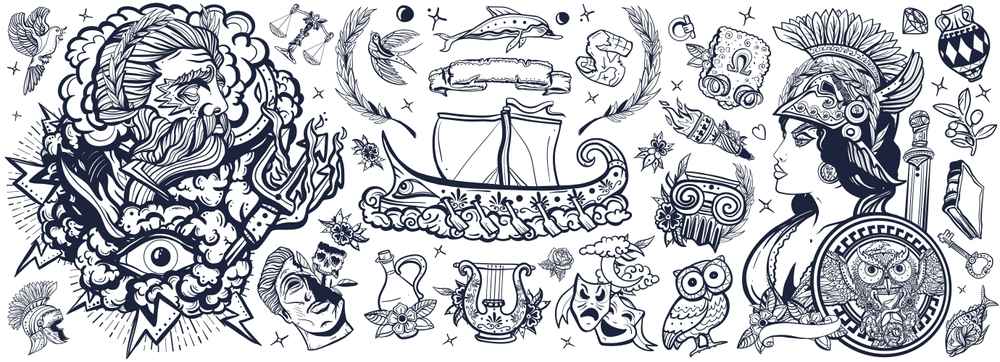Tattoos have been a means of self-expression for many centuries, transcending cultures and evolving from symbols of power in ancient times to modern representations of art and identity. The origins of tattoos are as varied as the societies they come from, with each custom contributing its special element to this enduring ritual. The history of tattoos is closely connected with the cultural values, ceremonies, and beliefs of various societies, from Polynesian warriors to modern artists.
Early Origins: A Representation of Strength and Sacredness
Evidence of tattoos has been traced back thousands of years, starting with Ötzi the Iceman, a mummy found in the Alps in 3300 B.C. He had more than 60 tattoos on his well-preserved skin. These symbols are thought to have been used for healing or religious reasons, emphasizing the long-standing cultural significance of tattooing throughout history.
In ancient Egypt, tattoos were viewed as signs of safeguarding and the ability to reproduce, especially for females. Women shown in burial sites frequently had tattoos, thought to offer safety during pregnancy or show their link to the deities. In the same way, ancient Chinese societies linked tattoos to mythical beings and used them as spiritual protectors.
Tattoos among Pacific Islanders: A Traditional Rite of Passage
In the Polynesian islands, tattoos known as tatau were not just body decorations but played a crucial role in determining social standing and personal identity. Polynesian tattoos frequently represented qualities such as courage, power, and ancestral heritage. The complex patterns tattooed on warriors’ bodies symbolized their accomplishments and preparedness for combat. Tatau tradition also served as a ceremonial transition, signaling important phases in an individual’s life, like reaching adulthood.
Asia: Tattoos as a Form of Artistic Expression and Defiance
In Japan, tattooing evolved into an intricate artistic style known as irezumi. Initially, tattoos were used as a punishment for criminals, but over time they became a major part of Japanese culture, particularly during the Edo era. Irezumi exhibited complex designs inspired by nature, legends, and traditional tales, transforming the human body into an alive work of art. Despite artistic developments, tattoos in Japan are still stigmatized because of their association with the Yakuza, the Japanese mafia, which remains active in certain areas of the country.
In Southeast Asia, tattooing is closely linked to spiritual beliefs as well. In Thailand and Cambodia, monks make sak yant tattoos believed to offer protection and good fortune to wearers. Various tattoos often showcase sacred geometric shapes, animals, or ancient writings, each symbolizing unique blessings.
In Western society, tattoos are highly regarded as a means of expressing one’s individuality.
Tattoos were introduced to Western society by sailors and explorers who encountered the practice while exploring the Pacific Islands. In the late 1800s and early 1900s, tattoos became popular among sailors, soldiers, and circus performers in Europe and the US. By the mid-20th century, tattoos were viewed as signs of defiance associated with subcultures like bikers and punks.
Summary
The long history and cultural importance of tattoos prove the lasting impact of this art form. Even though contemporary tattoos may prioritize appearance and individual significance, their origins stem from cultural ceremonies, religious convictions, and societal affiliations across the globe. It is crucial for individuals looking to adopt this art form to locate a talented and experienced artist who can accurately portray their ideas. For those in search of the top tattoo artist in Kolkata, Bengal Ink Tattoo Studio combines artistic skill with cultural understanding, resulting in tattoos that represent both history and uniqueness.

